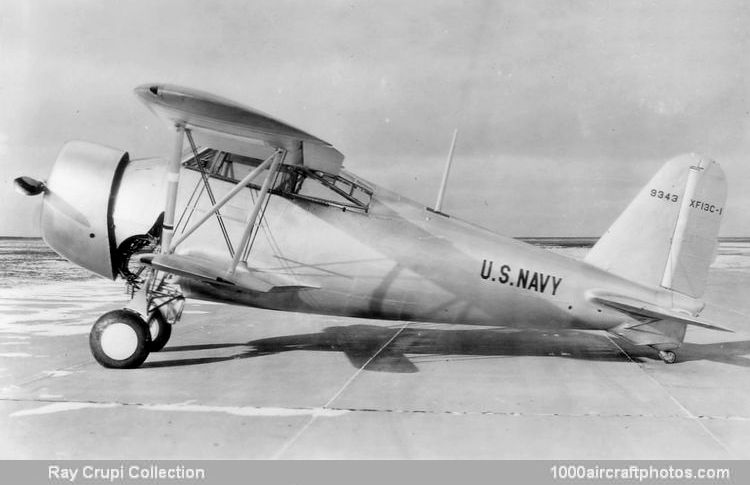08/31/2010. Remarks by Johan Visschedijk: "After the abortive Curtiss XF12C-1 effort, the company made another attempt to produce a fighter which proved to be more interesting. On November 23, 1932, the Navy ordered the Curtiss XF13C-1. The airplane was an all-metal high-wing monoplane with the landing gear retracting into the fuselage. Having learned its lesson, Curtiss designed this fighter as a single-seater with enclosed canopy. The wing, which spanned 35 ft (10.67), was supported by struts and had slots and flaps to keep the landing speed low.
It was delivered on February 10, 1933. With the airplane came a second set of wings to convert the airplane into a sesquiplane for comparative tests. The chord on this upper wing was narrower and the high-lift devices were eliminated. The lower wing spanned a mere 24 ft (7.32 m). As a biplane, this same ship was designated Curtiss XF13C-2. In December 1933 Curtiss test pilots flew it as a biplane.
Because of the heavy support struts, the monoplane was the heavier configuration, had a lower service ceiling and longer take off run, but, with a top speed of 223.9 mph (360.3 kmh), was faster than the biplane version which, because of the added drag of the lower wing, was limited to 205 mph (324 kmh). The biplane version landed at 61.2 mph (98.5 kmh), the monoplane at 64.5 mph (103.8 kmh). After initial tests by the USN, a second set of biplane wings was ordered. After additional testing, the XF13C was loaned to the USAAC. Although it handled well, the USAAC was unimpressed with the performance of this aircraft as a monoplane, let alone a biplane.
As the Curtiss XF13C-3, the airplane made its final appearance in May 1935 in the form of a monoplane with increased fuel tankage and revised wing. Its new engine was a 700 hp Wright XR-1510-12. The XF13C-3 had a top speed of 232.8 mph (374.6 kmh), but additional weight had an adverse effect on its landing characteristics. After use as a test bed by the USNC, the airplane was finally turned over, toward the end of 1938, to NACA at Langley Field, Virginia. The airplane was dismantled and stored in a hangar, its ultimate fate remains a mystery."
